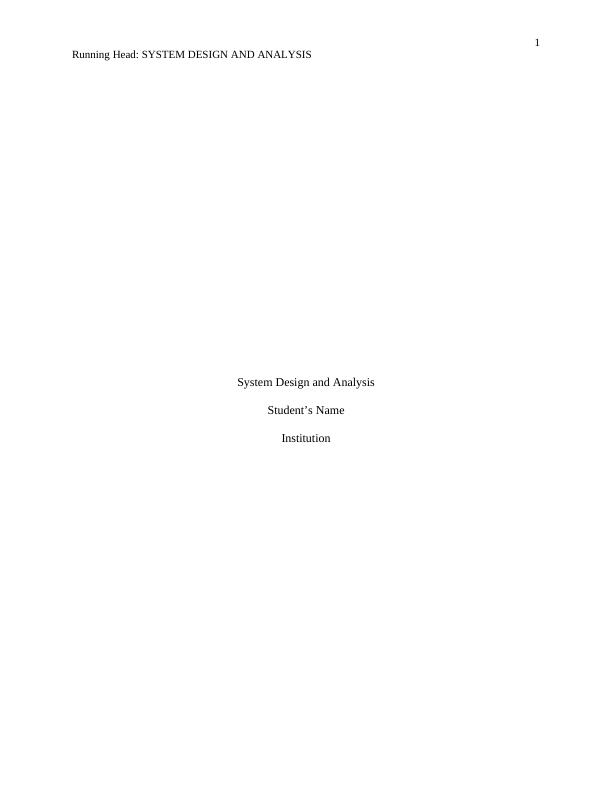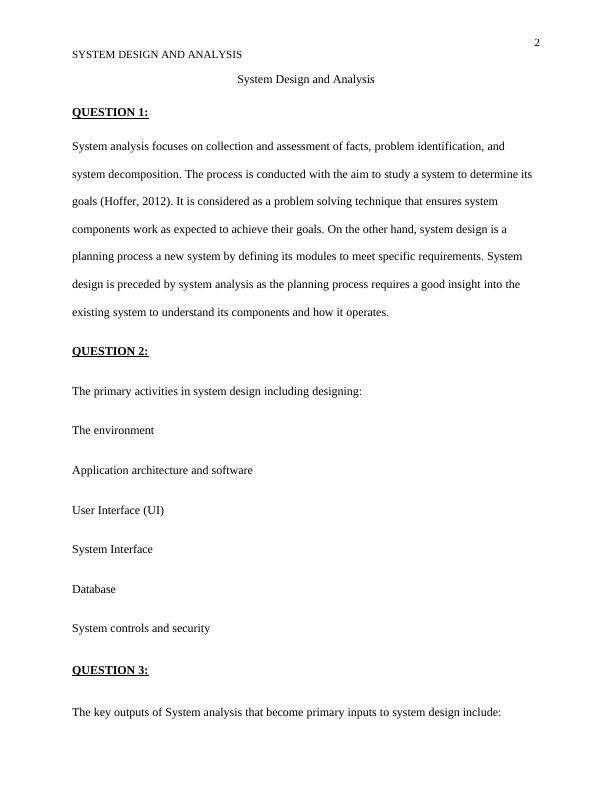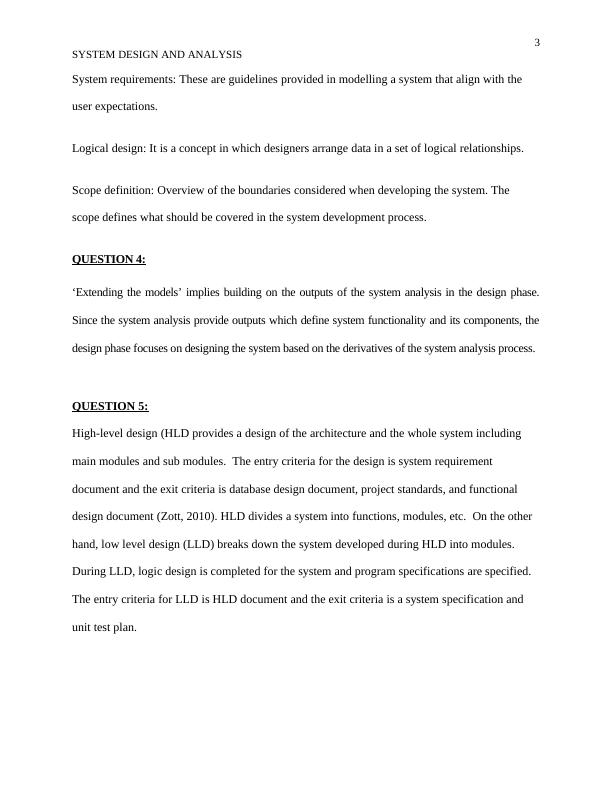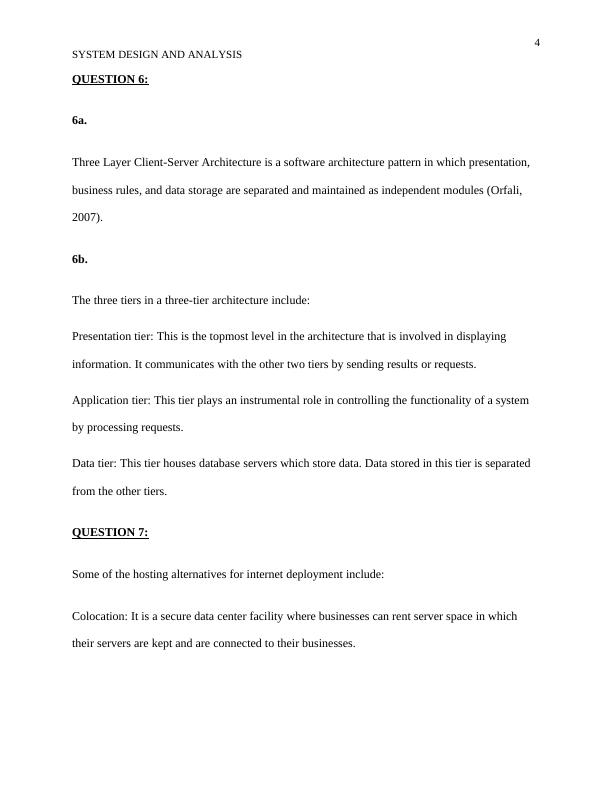System Design and Analysis
Added on 2020-04-07
14 Pages2290 Words45 Views
1Running Head: SYSTEM DESIGN AND ANALYSISSystem Design and AnalysisStudent’s NameInstitution

2SYSTEM DESIGN AND ANALYSISSystem Design and AnalysisQUESTION 1:System analysis focuses on collection and assessment of facts, problem identification, and system decomposition. The process is conducted with the aim to study a system to determine its goals (Hoffer, 2012). It is considered as a problem solving technique that ensures system components work as expected to achieve their goals. On the other hand, system design is a planning process a new system by defining its modules to meet specific requirements. System design is preceded by system analysis as the planning process requires a good insight into the existing system to understand its components and how it operates. QUESTION 2:The primary activities in system design including designing:The environmentApplication architecture and softwareUser Interface (UI)System InterfaceDatabase System controls and security QUESTION 3:The key outputs of System analysis that become primary inputs to system design include:

3SYSTEM DESIGN AND ANALYSISSystem requirements: These are guidelines provided in modelling a system that align with the user expectations.Logical design: It is a concept in which designers arrange data in a set of logical relationships. Scope definition: Overview of the boundaries considered when developing the system. The scope defines what should be covered in the system development process.QUESTION 4:‘Extending the models’ implies building on the outputs of the system analysis in the design phase.Since the system analysis provide outputs which define system functionality and its components, thedesign phase focuses on designing the system based on the derivatives of the system analysis process.QUESTION 5:High-level design (HLD provides a design of the architecture and the whole system including main modules and sub modules. The entry criteria for the design is system requirement document and the exit criteria is database design document, project standards, and functional design document (Zott, 2010). HLD divides a system into functions, modules, etc. On the other hand, low level design (LLD) breaks down the system developed during HLD into modules. During LLD, logic design is completed for the system and program specifications are specified. The entry criteria for LLD is HLD document and the exit criteria is a system specification and unit test plan.

4SYSTEM DESIGN AND ANALYSISQUESTION 6:6a.Three Layer Client-Server Architecture is a software architecture pattern in which presentation, business rules, and data storage are separated and maintained as independent modules (Orfali, 2007). 6b.The three tiers in a three-tier architecture include:Presentation tier: This is the topmost level in the architecture that is involved in displaying information. It communicates with the other two tiers by sending results or requests. Application tier: This tier plays an instrumental role in controlling the functionality of a system by processing requests. Data tier: This tier houses database servers which store data. Data stored in this tier is separated from the other tiers. QUESTION 7:Some of the hosting alternatives for internet deployment include: Colocation: It is a secure data center facility where businesses can rent server space in which their servers are kept and are connected to their businesses.

End of preview
Want to access all the pages? Upload your documents or become a member.
Related Documents
Software Development Process Assignmentlg...
|15
|2280
|19
Restaurant Web Application Developmentlg...
|8
|1593
|56
Enterprise Software Development Assignmentlg...
|7
|1200
|42
Strong Authentication and Authorizationlg...
|4
|803
|52
Restaurant Details n-tier web applicationlg...
|9
|1632
|39
Computer Networking Assignment | Computer Systemslg...
|9
|1425
|88
